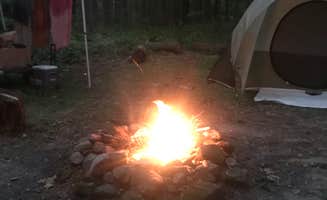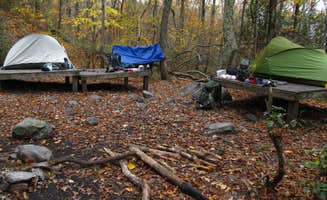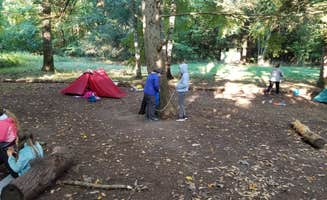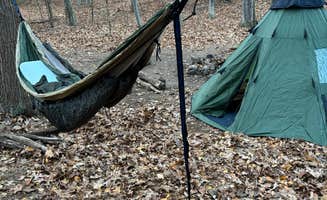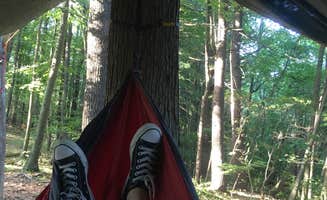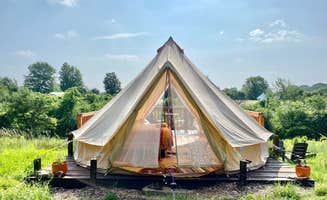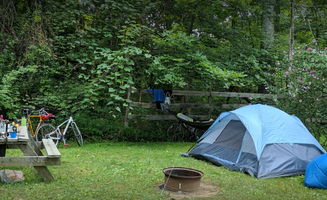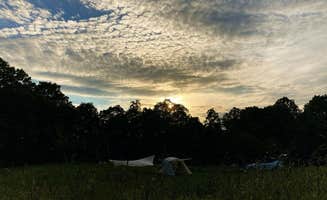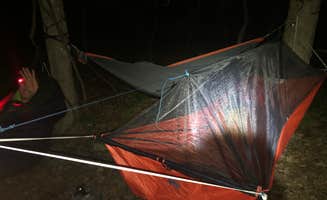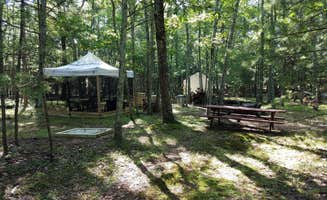Primitive tent camping options dot Connecticut's northwestern highlands, with several backcountry sites requiring significant hiking to access. Most locations are situated between 1,500-2,100 feet in elevation, creating cooler overnight temperatures than valley camping areas. Seasonal restrictions apply at many sites, particularly during winter months when snowfall can limit trail access to shelters and designated camping areas.
What to do
Mountain hiking: Visitors to the Bear Mountain area can access both shelters and outstanding views. According to one camper at Brassie Brook Shelter: "The fall views made it worth it. We did have some sun spots at least throughout the trip. Great weekend overnight backpacking."
Multi-day trekking: The trails between Massachusetts and Connecticut offer challenging terrain for experienced hikers. A visitor to Laurel Ridge reported: "We began by making the hike up Mount Race. No matter where you start, you'll be hiking on some of the steepest parts of the Appalachian Trail in the northwestern Connecticut and southwestern Massachusetts."
Creek exploration: Several campgrounds feature small streams perfect for cooling off during summer months. At Alander Trail Campground, campers can access natural water features within a short hike from established sites.
What campers like
Privacy between sites: The walk-in nature of many campgrounds creates natural spacing between campers. At Onion Mountain Park, one visitor noted: "We ended up finding a very primitive spot off the blue trail (on top of the mountain), where we settled down for the night. The spot is not very big so make sure to bring a smaller tent."
Bear protection systems: Many campsites provide secure food storage options. A camper at Alander Trail Camground mentioned: "They give you a semi-flat area for a tent, a fire pit and grill rack, one picnic table, and a bear box you would be sharing with other campers nearby."
Clean facilities: Despite remote locations, many shelters maintain basic amenities. One visitor to Brassie Brook reported: "Brassie Brook has a small lean-to as well as about 4/5 campsites located all around. Firepits, toilets but that's about it."
What you should know
Hiking requirements: Most of the best tent camping near West Cornwall, Connecticut requires significant walking. At Alander Trail, a camper explained: "You have to park at the entrance and hike in about 1.5-2 miles with everything on your back to get to the spots."
Fire regulations vary: Not all sites allow fires, particularly during dry seasons. A visitor to Riga Lean-To advised: "Carry out all your trash, but there are toilets."
Wildlife precautions: Bears are active throughout the region. An Onion Mountain Park camper recommended: "We did put a bear bag about 100 feet away."
Water sources limited: Natural streams require treatment. One hiker noted: "There is an outhouse a ways from the camping area. There is also a bear box near that if you bring a padlock you can use it."
Tips for camping with families
Beginner-friendly options: Some areas cater to first-time backcountry campers. A visitor to Onion Mountain Park shared: "My BSA troop has been going here for years to help new scouts learn to camp. It is a very casual site and good for your first trip, you are close to your car and the road in case you need it."
Educational opportunities: Several areas offer nature programs during summer months. A Ward Pound Ridge Reservation visitor mentioned: "The Trailside Nature Museum is also fun for the kids."
Shelter options for weather concerns: Lean-tos provide protection during unexpected storms. One camper reported: "The shelters are great for people who want to camp and not have to worry about unplanned weather."
Trail difficulty considerations: Parents should research elevation changes before bringing children. A hiker warned: "Be prepared for steep inclines, and lots of rocks."
Tips from RVers
Limited vehicle access: Most primitive camping near West Cornwall restricts vehicle types. At Samuel F. Pryor III Shawangunk Gateway Campground, a visitor noted: "No big RVs."
Nearby alternatives: Larger vehicles can find accommodations at developed campgrounds within driving distance of trailheads. A camper recommended: "About half the sites are walk-in and half the sites are drive-up."
Parking restrictions: Most backcountry sites limit vehicles per site. One visitor mentioned: "One parking space per site."


